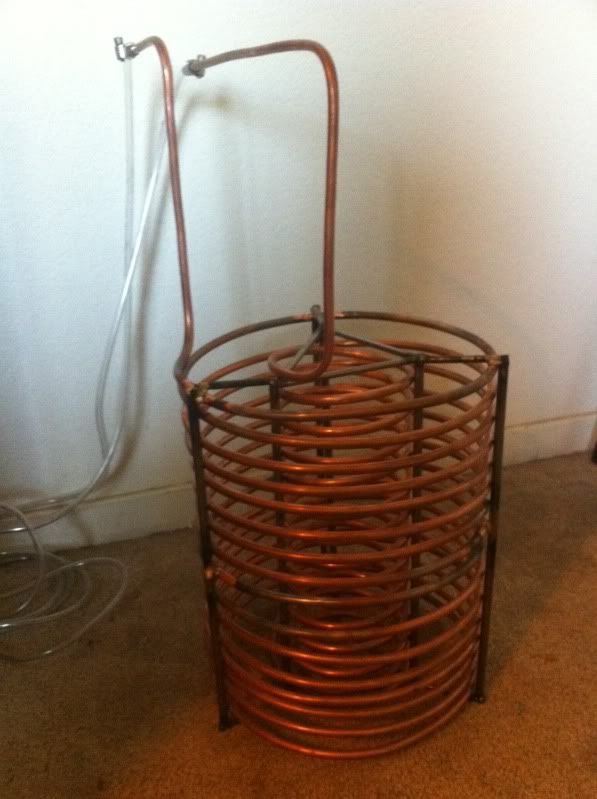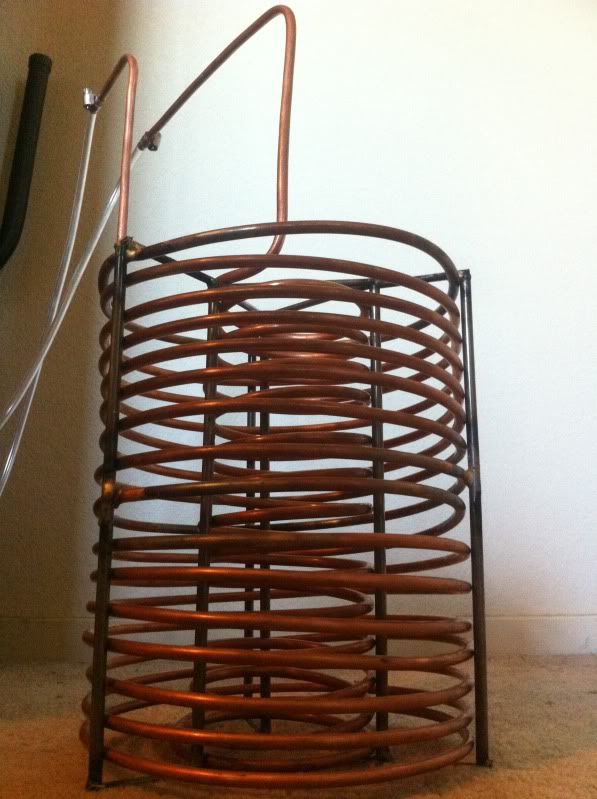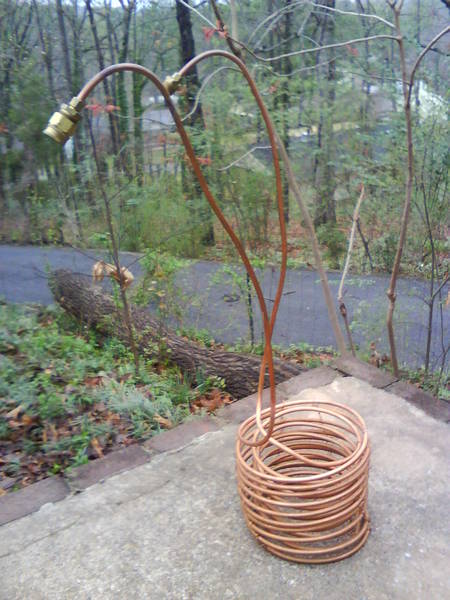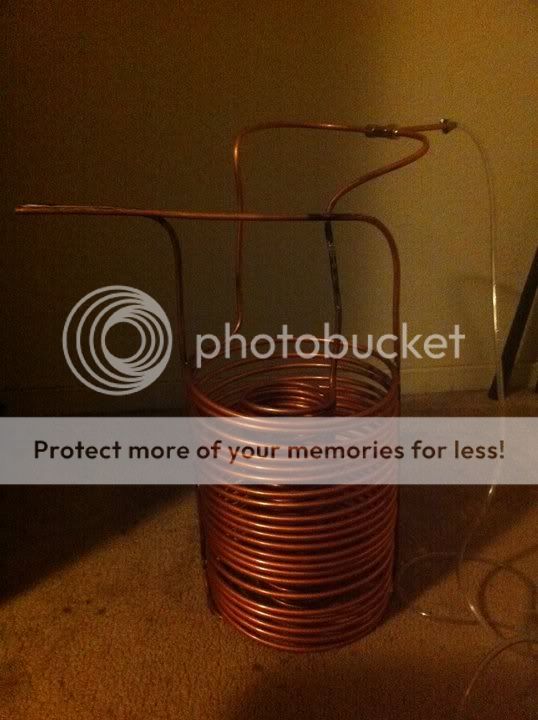QuagmiresChin
Active Member
I don't post a lot on here because I'm still new to this so I thought I should contribute at least something. I've never seen an immersion chiller like this, maybe there's a reason for it, but I thought it would be more efficient to have 2 coils using one copper tube and stretch the coils to almost the full height of the wort; we typically do 5 gallon batches, so the coils are stretched to 10" and brazed to steel rod bracing.
The inlet leads to the inner coil and it winds downward to the outer coil, then winds up the coil and to the outlet. We'll use this with a big ice bath for the kettle and hopefully have the wort cooled in just a few minutes. Total cost was $40. What do you guys think? My friend and I just finished it and it still needs a good scrubbing, but it's structurally complete.


The inlet leads to the inner coil and it winds downward to the outer coil, then winds up the coil and to the outlet. We'll use this with a big ice bath for the kettle and hopefully have the wort cooled in just a few minutes. Total cost was $40. What do you guys think? My friend and I just finished it and it still needs a good scrubbing, but it's structurally complete.






